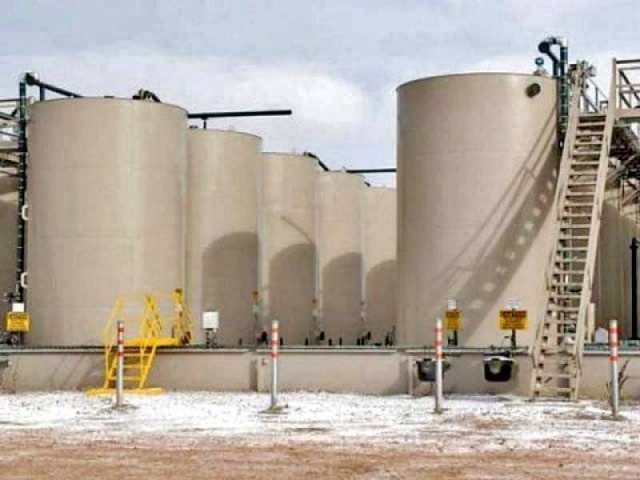Oil import, consumption rise
OGRA report says crude oil imports surged 28% to 8.7m tons in FY21

Pakistan’s import and consumption of petroleum products have increased significantly, according to an industry report, indicating a rise in economic activities and consumer demand across the country.
In the “State of the Regulated Petroleum Industry” report for fiscal year 2020-21, the Oil and Gas Regulatory Authority (Ogra) provided data that showed a growth in the midstream and downstream petroleum sector, which included oil, gas, liquefied natural gas (LNG), liquefied petroleum gas (LPG) and compressed natural gas (CNG).
In FY21, the import of crude oil surged 27.82% as it reached 8.66 million tons compared to 6.77 million tons in FY20. Similarly, the import of finished petroleum products rose 23.70% to 10.02 million tons in FY21 from 8.10 million tons in previous year.
However, the import of aviation fuel dived 72% from 0.17 million tons to 0.05 million tons.
Refineries in Pakistan also stepped up production at their plants during FY21 as their output of petroleum products increased 14.48% and touched 10.66 million tons as opposed to 9.31 million tons in FY20.
In the year under review, the consumption of petroleum products in the country rose 12.95% to 19.92 million tons as compared to 17.63 million tons in previous year.
Pakistan State Oil (PSO) increased its market share by three percentage points from 44% in FY20 to 47% in FY21.
Besides, oil marketing companies set up infrastructure facilities like oil storages with capacity of 0.58 million tons for petrol and 0.88 million tons for high-speed diesel at various depots across the country by the end of FY21.
In the year under review, Pakistan’s gas production, however, dropped over 6% to 2,006 million cubic feet per day (mmcfd) from 2,138 mmcfd in FY20, whereas gas consumption grew over 5%, reaching 3,884 mmcfd from 3,683 mmcfd.
The country had a network of 13,768 km of gas transmission pipelines and 191,478 km of distribution pipelines, thus ensuring natural gas supplies to domestic, industrial, commercial and transport sectors.
Gas utilities expanded their transmission and distribution network to cater to the demand from new consumers.
Sui Northern Gas Pipelines Limited (SNGPL) and Sui Southern Gas Company (SSGC) extended their transmission networks by 37 km and 17 km respectively during FY21. In the meantime, SNGPL extended its distribution network by 7,141 km and SSGC by 929 km.
The Ogra report revealed that a significant number of new subscriptions had been added as SNGPL connected 371,618 new consumers during FY21, taking total consumers to 7.41 million on its network. Similarly, SSGC added 95,436 new connections, taking the total to 3.21 million consumers on its network.
In terms of sectors, the main consumer of natural gas was the power sector, consuming over 30% (1,305 mmcfd), followed by the domestic sector with 20% (862 mmcfd), fertiliser 19% (829 mmcfd), general industry 8% (365 mmcfd) and captive power 5% (203 mmcfd).
Among provinces, Punjab’s consumption came in at 52% (1,426 mmcfd), Sindh 39% (1,052 mmcfd), Khyber-Pakhtunkhwa 7% (190 mmcfd) and Balochistan 2% (64 mmcfd).
Province-wise gas supply showed that Sindh’s share in total gas supply declined 11% from 1,344 mmcfd in FY20 to 1,192 mmcfd in FY21, Punjab’s share dropped 9% from 91 mmcfd to 83 mmcfd and Balochistan’s share fell 1% from 335 mmcfd to 333 mmcfd.
In contrast, Khyber-Pakhtunkhwa’s share increased 8% from 368 mmcfd to 398 mmcfd. The share of LNG increased 13% from 857 mmcfd to 969 mmcfd.
During the year, Ogra formulated the Pakistan Gas Network Code, which provides a uniform contractual framework for third-party access arrangements for the use of gas pipeline transportation systems and accommodates project-specific arrangements.
Under the third-party access regime, Ogra, in addition to granting licences for the construction of LNG terminals by Energas and Tabeer Energy, issued licences for the transmission and sale of natural gas/ re-gasified LNG to a number of applicants including K-Electric, Energas, Tabeer Energy and Shell.
Under the relevant provisions of Third-Party Access Rules 2018 and Pakistan Gas Network Code, Ogra has been ensuring the allocation of pipeline capacity by transporters – SNGPL and SSGC – for the interested shippers.
The report stated that LNG imports increased 13% from 857 mmcfd to 969 mmcfd during FY21 whereas its share in overall natural gas supplies rose to 33% from 29% a earlier year.
Published in The Express Tribune, September 24th, 2022.
Like Business on Facebook, follow @TribuneBiz on Twitter to stay informed and join in the conversation.

















COMMENTS
Comments are moderated and generally will be posted if they are on-topic and not abusive.
For more information, please see our Comments FAQ